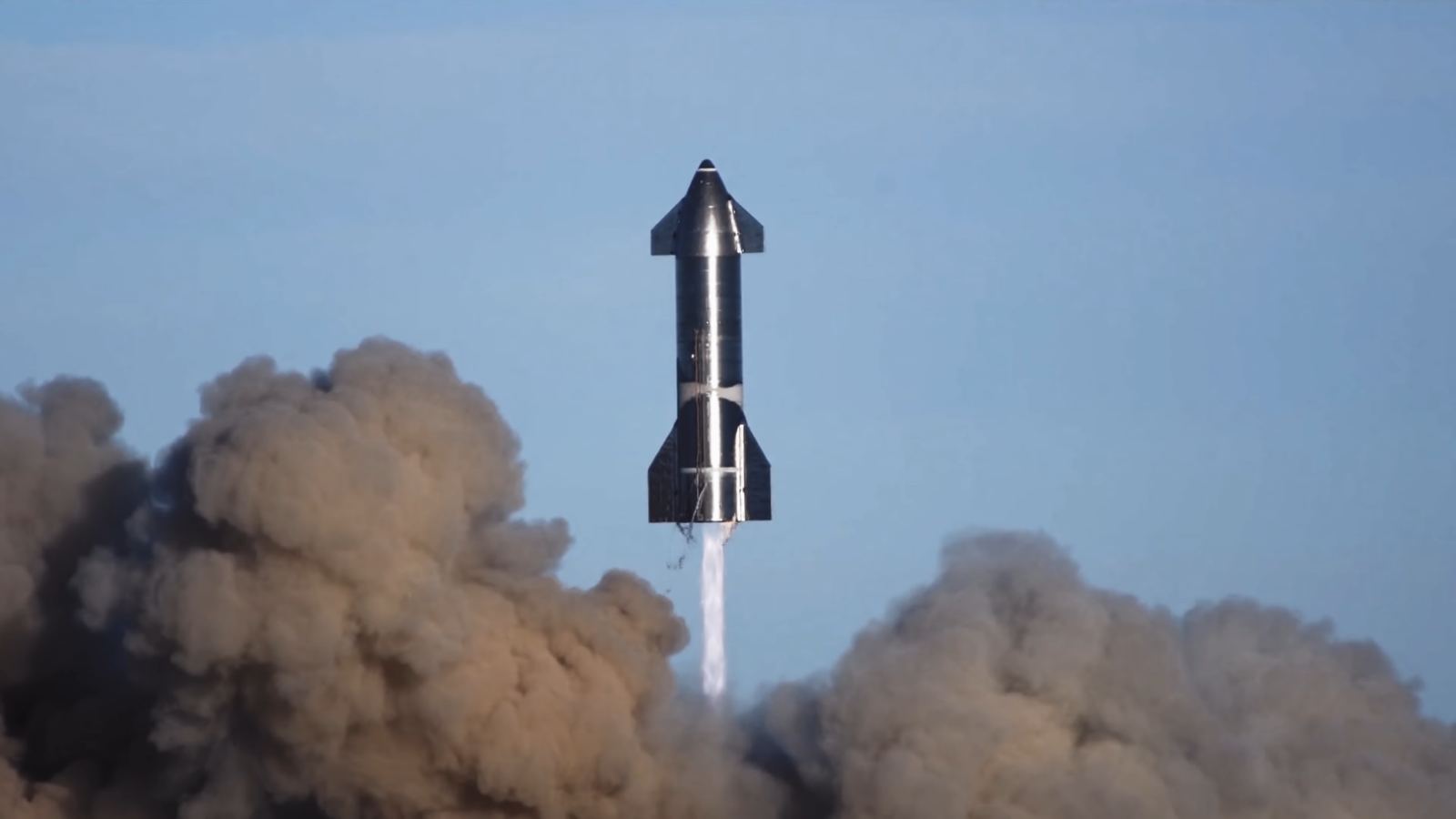To celebrate its greatest achievement to date with the Starship, SpaceX has released a video recap of the high-altitude SN8 flight. This was the 12.5 km hop test carried out on December 9, 2020, which saw the SN8 prototype rise to an altitude of 12.5 km (7.8 mi), perform a “belly down” maneuver and return to the launch pad. Although it failed to reach its target, the test was an important milestone in the development of the Starship.
The flight test came after several static fire tests were conducted with previous prototypes (SN1 to SN5) and a series of 150 meter (~ 500 feet) jump tests with SN5 and SN6. On October 20, 2020, another successful static fire test was conducted with the eighth prototype (SN8) using three Raptor engines. With the engines and design validated, the company prepared to carry out its first high altitude test in December.
The two-minute, twenty-second video captures the highlights of the test by merging images from the many different cameras that were recording that day. This included a series of external cams (including a drone cam that follows the SN8 all the way up) cams inside the engine compartment, one on the landing platform and cams mounted on the fuselage.
It starts by showing the engine ignition and the climb, with all three Ratpor engines producing a trail of blue-orange flames – which is the result of burning liquid methane and liquid oxygen (LOX) fuel. This is followed by the engine shutdown, where the three Raptor engines are deactivated (one at a time) when the SN8 approaches the peak of 12.5 km.
In slow motion, we see the SN8 turn on its side and watch its fins adjust for the “belly down” maneuver. This part of the test was done to validate the aerodynamic surfaces of the prototype, which Starship you will rely on maneuver and speed reduction when making an atmospheric re-entry. The descent is captured from various angles using the drone cam and the fuselage cam.
Then comes the “flip maneuver”, where two of the Raptors rekindle and gimbal to bring the tail for landing. This is shown from the side (drone cam) and from the ground. The engines catch fire for the landing they burn, but fail to slow down the SN8 enough to make a smooth landing. Touch down and unscheduled rapid disassembly (RUD) – also known as. explosion – follow.

This was due to a pressure problem in the fuel line, which ground crews quickly identified after the test was completed. Shortly after, Musk started to Twitter to share what they’ve learned:
“The pressure of the fuel collection tank was low during the landing burn, making the touch speed high and RUD, but we got all the data we needed! Congratulations SpaceX team, yes !! “
Despite the fiery ending, all major systems and surfaces involved have been validated. This included the climb, the shift from the tail to the header fuel tanks (once SN8 reached its peak), and the precision flap maneuver that allowed for a controlled descent. In the meantime, the crews obtained all the data they needed about the problem that prevented a soft touch and will use it to inform the next round of testing.
The video ends with the caption that reiterates the success of this first flight test at altitude:
“SN8 DEMONSTRATED A FIRST TYPE CONTROLLED AERODYNAMIC DESCENT AND A GROUNDING MANEUVER. TOGETHER, THESE WILL ALLOW LANDING WHERE THERE ARE NO PASSAGES, INCLUDING THE MOON, MARS AND BEYOND.
“NEXT: SN9.”

By the way, everything indicates that Musk plans to conduct a hop test with SN9 and others in the coming weeks. This includes Aviator Notices (NOTAMs) issued by the Federal Aviation Administration (FAA) for airspace around Brownsville, Texas, and road closure notices issued to Cameron Country around the Boca Chica test view.
Since then, they have been extended, with new NOTAMs issued for the next Wednesday and Thursday (January 13th and 14th) from 8:00 am to 6:00 pm local time (CST) – or from 6:00 am to 4:00 pm PST; 9:00 am to 7:00 pm EDT. Likewise, new road closures have been announced for State Highway 4 and Boca Chica Beech in Cameron Country for Monday through Wednesday (January 11 to January 13).
The SN9 was launched on the airstrip and conducted its first static fire test earlier this week (Wednesday, January 6). Unfortunately, the test was aborted after a short shot and another is likely to happen next week, before any jump tests are attempted. Meanwhile, the SN10 has been stacked and integrated within the High Bay and will be ready to launch as soon as the SN9 is put to the test.
The SN11 and SN12 are also being assembled within the facility’s Mid Bay, with the SN11 almost ready and needing only its nose. Musk also hinted that he and his team at the Boca Chica facility will test the SN9 and SN10 (and subsequent prototypes) simultaneously. This was in response to a tweet by RGV Aerial Photography (@RGVaerialphotos), which performs weekly flyovers to take pictures of the Boca Chica facilities.
The image in the tweet shows the SN9 on the landing platform, with a previous image of the SN8 added (using Photoshop) on the adjacent platform. The image caption contains a question for Musk: “With the SN10 almost complete and repairs being made to the airfield, do you think this is something we will see in the coming weeks?” To that end, Musk tweeted an answer: “yea. “
2021 will be an exciting time for SpaceX, commercial space and space exploration in general! Although the year has seen its share of bad news, it looks like there are some bright lights on the horizon!
